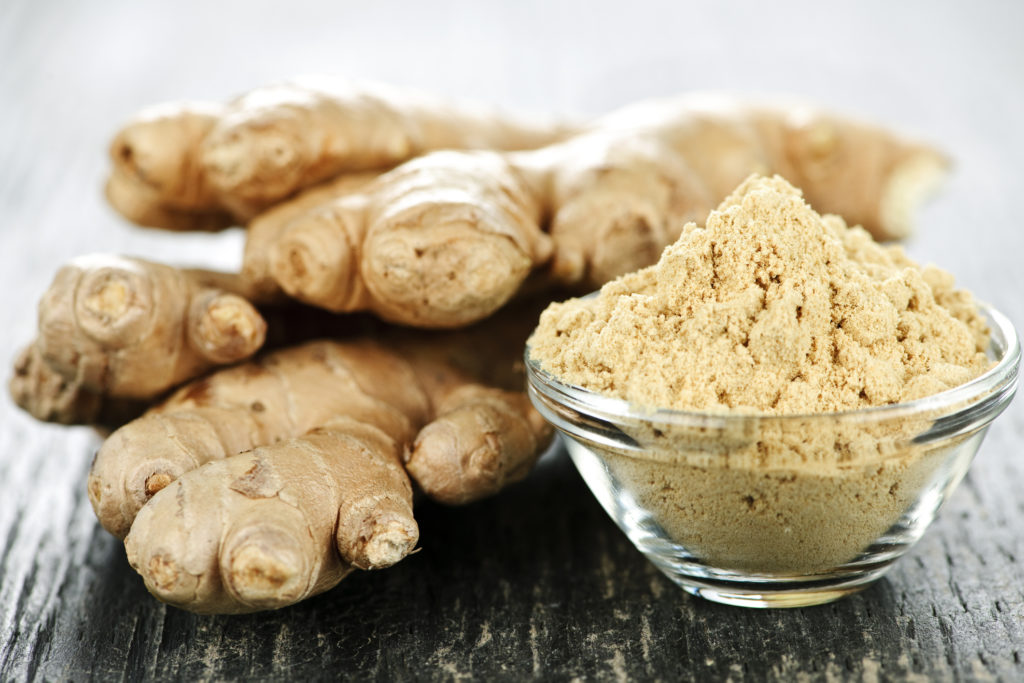
Ginger, zingiber officinale, is thought to be perhaps the most used plant in the history of mankind. The Sanskrit name for ginger is “vishwa bhesaj,” which means universal medicine. Best known for treating indigestion and nausea, ginger can also act as a decongestant, and can help with poor circulation, arthritis and other cold weather imbalances.
The History of Ginger

For over 4000 years, ginger has been used throughout the world as a culinary spice, specifically in India, China, Korea, Thailand, Indonesia, and Vietnam. By the ninth century, ginger reached Rome and its use spread quickly to other areas in Europe. It was popular in England as a spice used alongside salt and pepper.


Henry VIII as well as his daughter Elizabeth I, loved ginger. It is said that at state dinners, Elizabeth would give guests a gingerbread man that resembled either the King or her. Gingerbread continues to be a favorite in English villages with each possessing its own special recipe, and unique cookie molds. Germany also took to ginger and gingerbread, but rather than using cookies, they made colorful and creative houses with the treat during the Christmas season.
Here is a sample of how other countries across the globe have used this culinary spice:
Germany: Carp cooked with gingerbread and ginger snaps
Japan:Ginger is pickled to make Shoga
Korean: Kimchi, a popular fermented salad
India and Thailand: As a key ingredient in curries
Jamaica: Part of the island’s famous spicy jerk seasoning
Myanmar (Burma): Uses fresh ginger to mask the odor of fish
Ginger is also used in many drinks including ginger ale, ginger beer, and ginger tea, and it is added to liquors and coffees as well.
Half of the world’s supply of ginger comes from India’s Malabar Coast; however, most of what is found in the United States is grown in Hawaii. While Sierra Leone and Nigeria are thought to produce the most pungent ginger, many chefs believe that best for cooking comes from Jamaica.
How to Buy Ginger
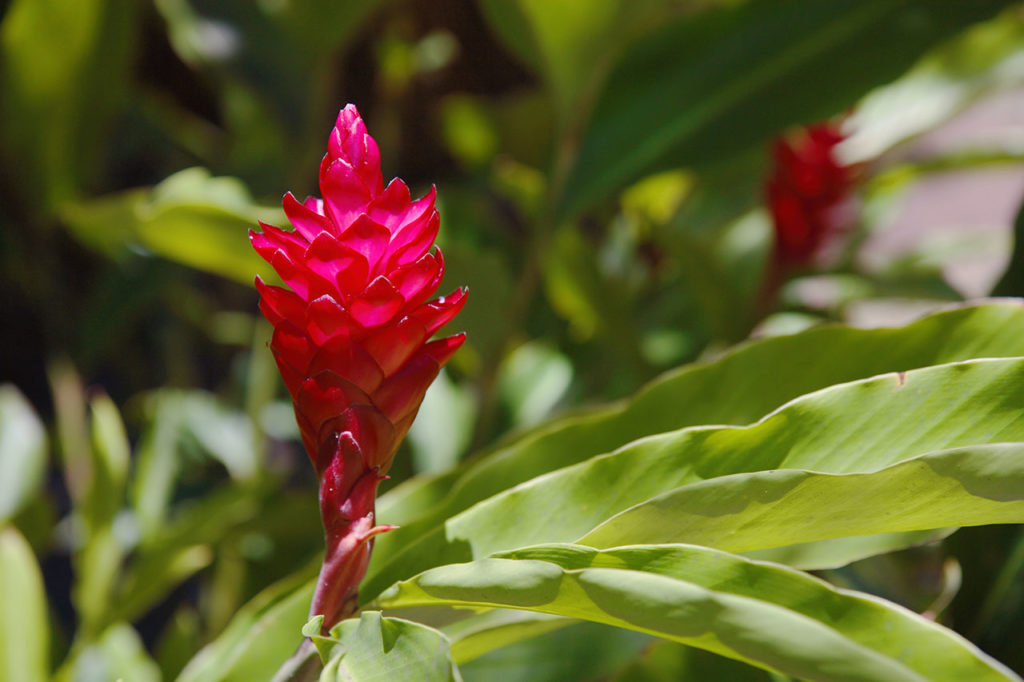
Ginger is planted in August or September using the previous year’s crop. It takes about nine months to reach maturity. After the plant’s flowers appear, the tops die, leaving the underground stem known as a rhizome ready to harvest.
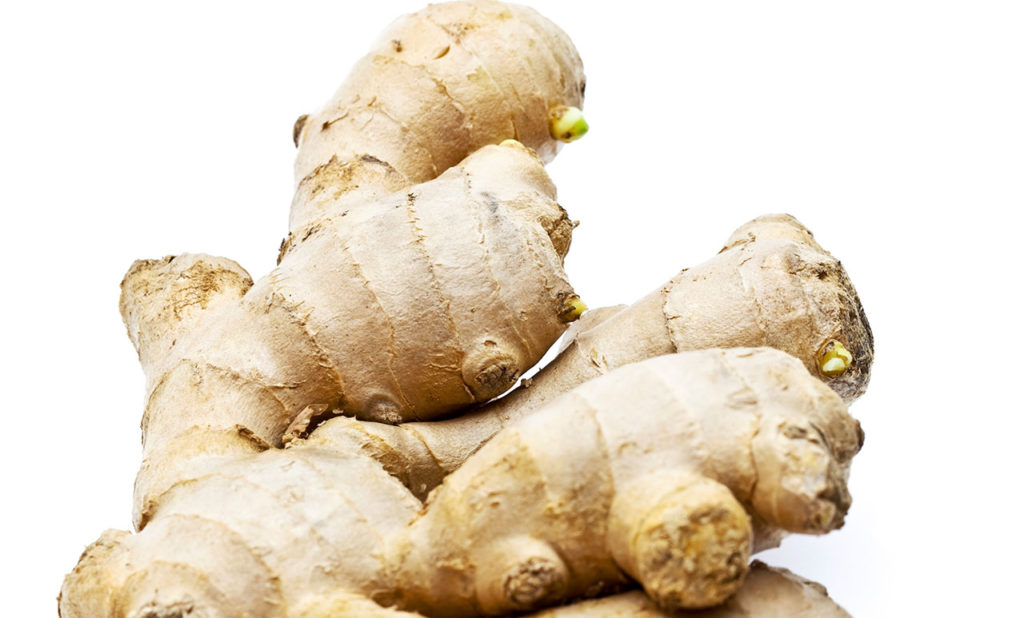
A piece of ginger is called a “hand”. It can be purchased fresh whole, sliced, and diced, or dried and ground or crystallized. When purchasing whole, fresh ginger, look for hands that are firm and plump, light brown in color and with smooth skin. Fresh ginger, depending on where and how it was grown, can have varying amounts of gingerol, the phytonutrient responsible for its intense flavor; because of this, its taste can range from mild to intense.
Fresh ginger can last in the refrigerator up to two weeks, but can be frozen and used when needed. Followers of Ayurveda should not freeze it.
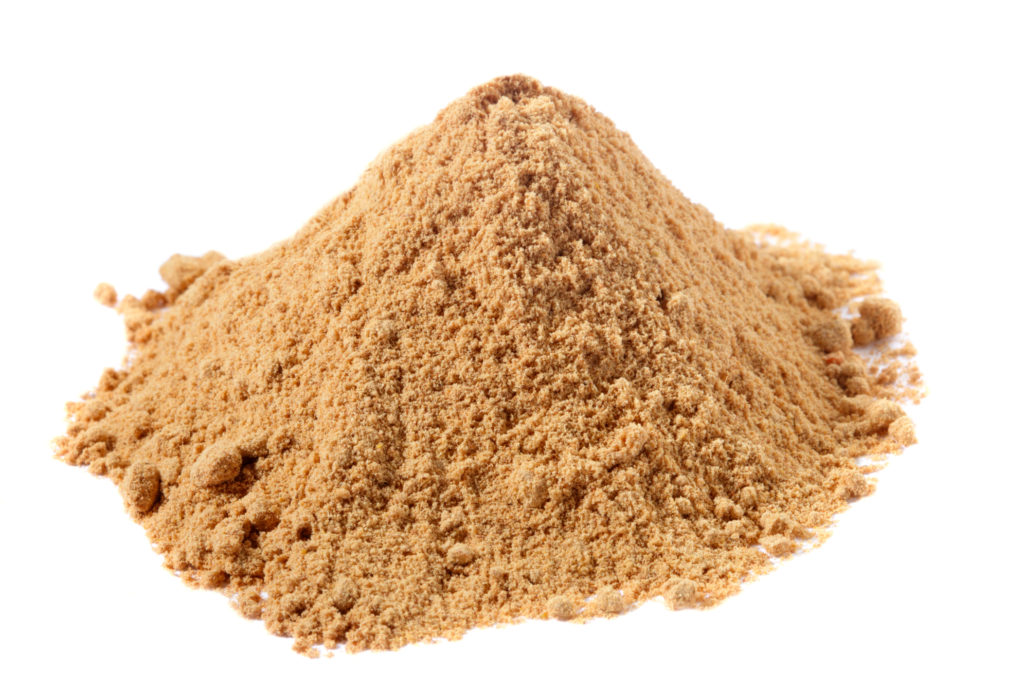
Ground ginger lacks the aroma of fresh ginger, but the spicy fragrance and characteristic flavor are intact. Both fresh and dried gingers are used in savory dishes. Sweet dishes primarily call for the dried form. Most contemporary Asian and Indian dishes use fresh ginger.
To cook with fresh whole ginger, peel the skin using a paring knife or a vegetable peeler and cut into quarter size pieces. If adding to a recipe, a small grater or pestle can assist in creating the right consistency for the dish. Once added to the food, this very strong fresh ginger flavor mellows.
Ginger used as Medicine
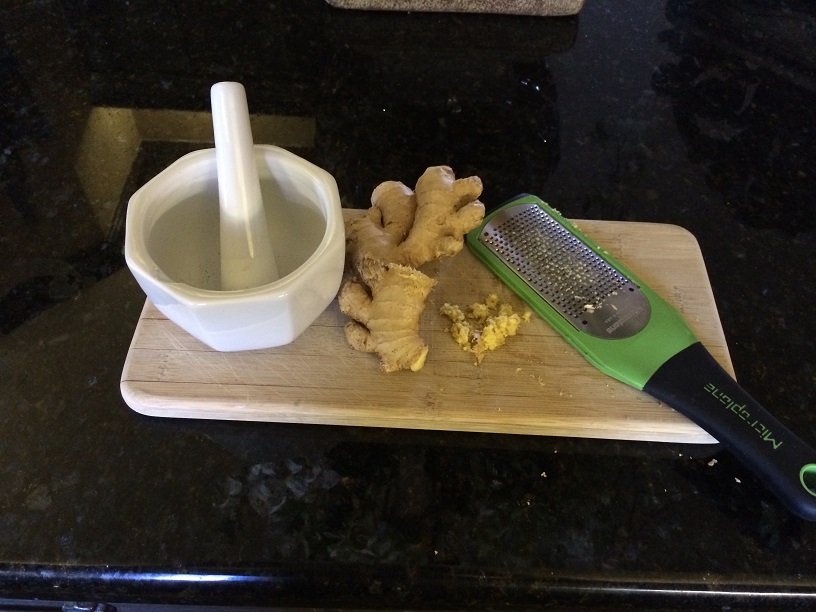
Fresh ginger is pungent and heating and has a sweet vipāka (or post digestive effect). Dry ginger is also pungent and heating, but with a pungent vipāka. Both types ignite the digestive fire and improve the digestion, absorption and assimilation of foodstuffs in the body. Ginger also helps relieve heartburn and stomach aches by speeding-up digestion and causing food to leave the stomach more quickly. The book Ayurvedic Cooking for Self-Healing suggests chewing a thin slice of ginger with salt 10 minutes before a meal, to act as an appetizer and stimulate agni (digestive fire).
Ginger is high in antioxidants, and has anti-inflammatory and anti-bacterial properties. Its warming, stimulating, and anti-coagulant qualities are good for the circulatory system. By enhancing oxygen’s flow in the blood stream, ginger can help lower LDL or bad cholesterol, and it has been found to decrease blood platelet accumulation, which contributes to clog arteries that cause heart attacks and strokes.
Ginger has shown promise as a treatment for migraine headaches and a study in Cancer Research presented evidence that showed that ginger help fight lung, breast, prostate, skin, bladder, kidney, pancreatic, and ovarian cancers. Ginger is also frequently used to reduce inflammation and relax sore muscles, as well as sooth osteoarthritis.
Ginger Home Remedies (Source: Ayurvedic Cooking for Self-Healing)
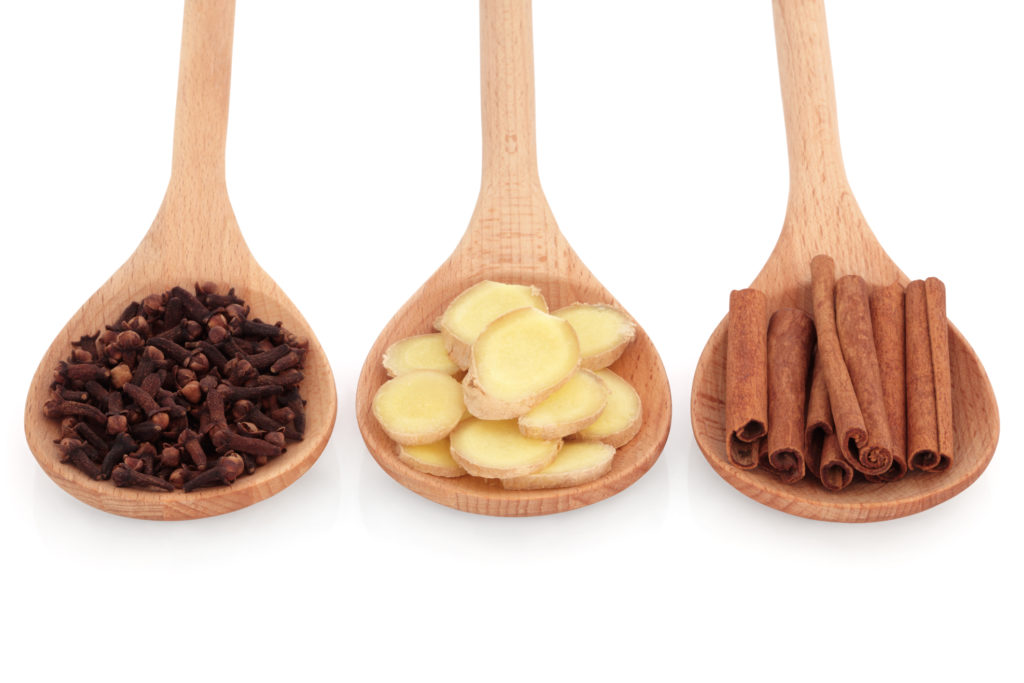
Cold and Flu Relief: Add ginger to food to relieve congestion, cough, and breathlessness associated with a common cold. To treat cold and flu symptoms, drink 1 cup of tea (see recipe below) made with 1 teaspoon each of dry ginger, cinnamon, and fennel. Ginger tea infused with lemon and honey also works well. To treat hoarseness, chest pain, wheezing, and coughing, mix 1 teaspoon ginger juice and 1 teaspoon of lime juice with 2 pinches of rock salt.
Digestion: Mix 1 teaspoon each of fresh ginger juice and lime juice, and take after eating to aid digestion, relieve excess gas, constipation, and lower abdominal pain. Rub a small amount of fresh ginger juice around the belly button to treat diarrhea and abdominal pain.
Jet Lag: Swallow one capsule of dry ginger one hour before a flight.
Nausea and Vomiting: Mix 1 teaspoon of ginger juice with 1 teaspoon of fresh onion juice to calm nausea and vomiting.
Regulation of Cholesterol and Weight: Mix 1/2 teaspoon of trikatu (equal parts dry ginger, black pepper and pippali) with 1 teaspoon of honey to burn ama (see blog) and excess kapha in the lungs. Take 2 or 3 times per day before meals.
Rheumatoid Arthritis: Add ½ ounce of castor oil to 1 cup of ginger tea and drink before bed.
Sinus Congestion: Mix 1 teaspoon of fresh ginger juice and honey, and ingest 2 to 3 times a day.
Sinus Headache: Apply ½ teaspoon of dry ginger powder paste on the forehead. Wash the area after treatment.
Splenic Pain, Osteoarthritis, and Diarrhea: Cook 1 tablespoon of ginger powder and 2 tablespoons of ghee in an iron pot to make it into a paste. Eat a ½ teaspoon at a time, 3 times a day.
* Note for Ayurveda Practitioners: The heating qualities of ginger may irritate Pitta constitutions; use it carefully.
Additional Ginger Recipes
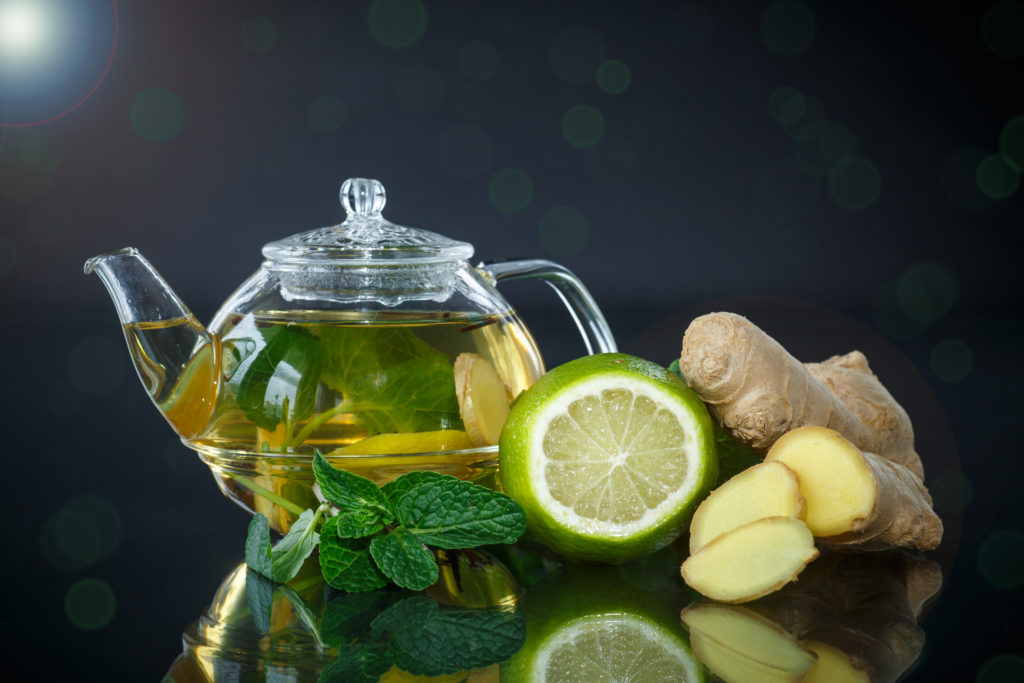
Ginger Tea: Steep fresh grated ginger root in boiling water for 5 to 10 minutes and enjoy. Drink no more than 2 cups daily.
Ginger Bath: Shave 2 tablespoons of fresh Ginger and place in a small mesh bag. Throw into a warm bathtub. Let steep for 20 minutes; bathe for 20 minutes.
Note of Caution: Be careful when taking ginger in supplement form as it may interact with certain medications. Talk to your physician before taking ginger, especially if you are on diabetes, high blood pressure, or blood thinning medicine.
Play with some of these recipes, or if you have some of your own that you would like to share, send them my way and I will post them.
To your health and happiness,
Peggy
